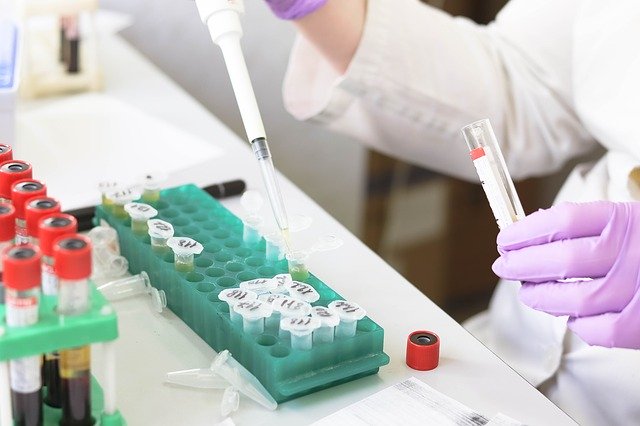It is well known, that COVID-19 affects people very differently - some recover from the infection without any symptoms, while some develop respiratory failure (SRF) that can cause death. The team of scientists from the USA researched the early stage of the infection.
Researchers used reverse genetics to recreate the wild-type SARS-CoV-2 and to construct two reporter virus variants by replacing ORF7 with GFP and nLUC-GFP.
It is known, that ACE2 receptor and TMPRSS2 protease play a role in the infection. Scientists analyzed the expression of these proteins in the samples from the respiratory tract using RNA hybridization in situ. It was discovered that the ACE2 expression level was the highest in the respiratory epithelium lining the nasal cavity, lower in the squamous epithelium lining oropharyngeal tonsillar tissue and the lowest in the alveolar region. However, TMPRSS2 expression kept the same level in all the tissues of the respiratory tract.
Then, researchers tested the sensitivity of the different regions of the respiratory tract. The primary cultures of the human nasal epithelium (HNE), large airway and lower airway (LAE and SAE), pneumocytes type I and II (AT2/AT1-like), nasal submucosal glands, fibroblasts (FBs), microvascular endothelial cells (MVE) and an immortalized nasal cell line (UNCNN2TS) were infected with the reporter SARS-CoV-2.
Virus successfully replicated in HNE, LAE, SAE and AT2/AT1-like, but no signal of replication was found in nasal submucosal glands, UNCNN2TS, MVE and FB. The virus preferred AT2 to AT1 when infecting the AT2-AT1 culture.
Scientists noted that the gradient was the same when analyzing the cultures from the same donor, with the cells of the large airway being more likely to get infected than the lower airway, which correlates with the changing level of ACE2 expression. However, the effectiveness of the LAE and HNE infection acquired from the different donors was different. That suggests that there are other factors that explain the SARS-CoV-2 progression except for ACE2 and TMPRSS2 expression.
Next, researchers used RNA hybridization in situ and immunohistochemical staining on COVID-19 autopsy lung sections to localize the infection. Ciliated cells were infected (same result as with in vitro experiments), but SARS-CoV-2 ignored the secretory cells, submucosal glands cells and goblet cells. The virus was also found in pneumocytes of both types. Mapping the foci of infection allowed scientists to suggest that SARS-CoV-2 got into the lungs from the upper respiratory tract.
According to all the acquired data, scientists created an infection model for COVID-19. The first infection site is the nasal cavity. The nasal secret flows down into the mouth where it mixes with the liquid and gets into the lungs during microaspiration.
This infection model grants two possible explanations for the difference in SARS-CoV-2 severity: the high sensitivity of nasal epithelium to SARS-CoV-2 and the probability of microaspiration. The microaspiration risk factor is higher for people with diabetes and elderly people, which are the same groups as with the highest percentage of severe SARS-CoV-2 cases.
